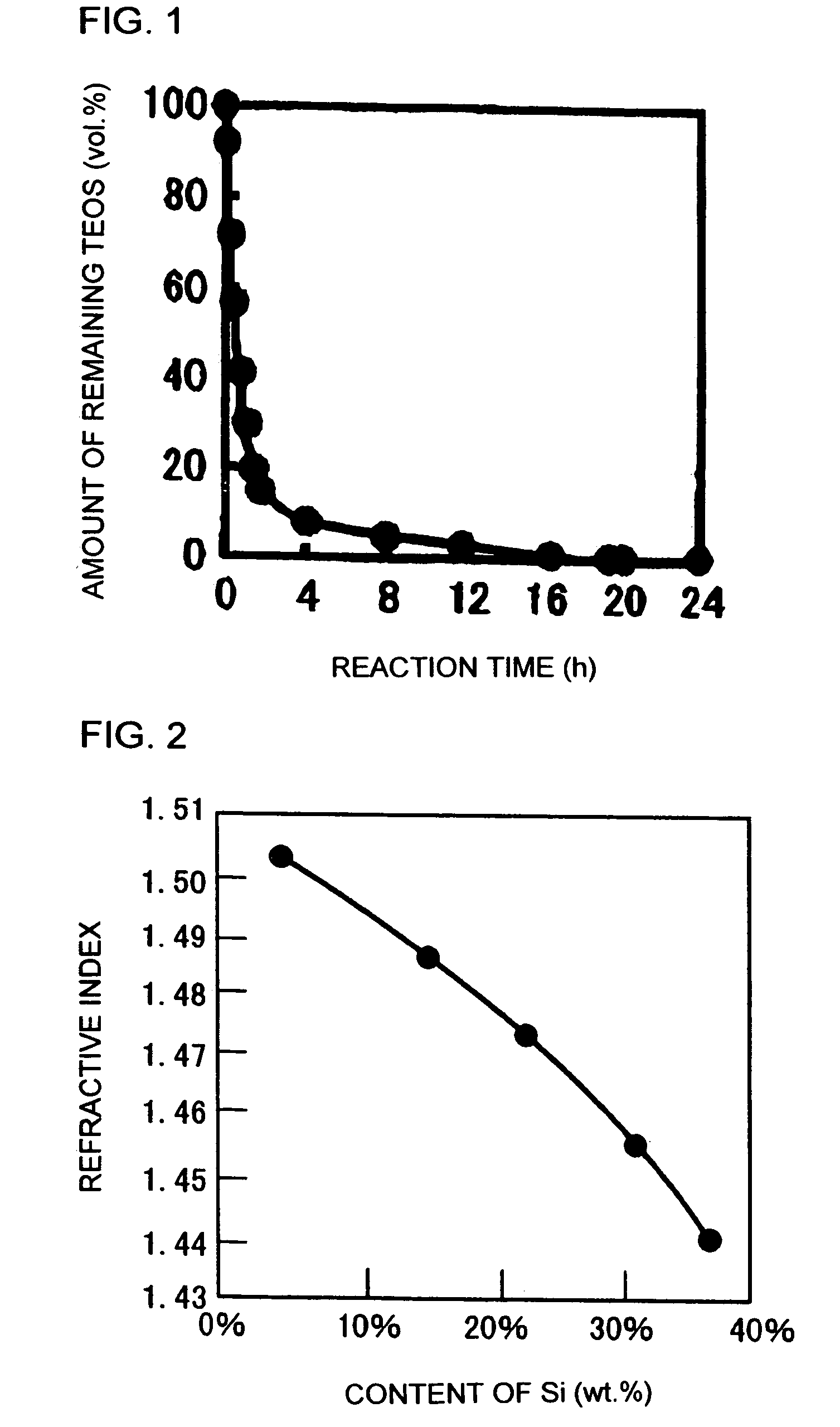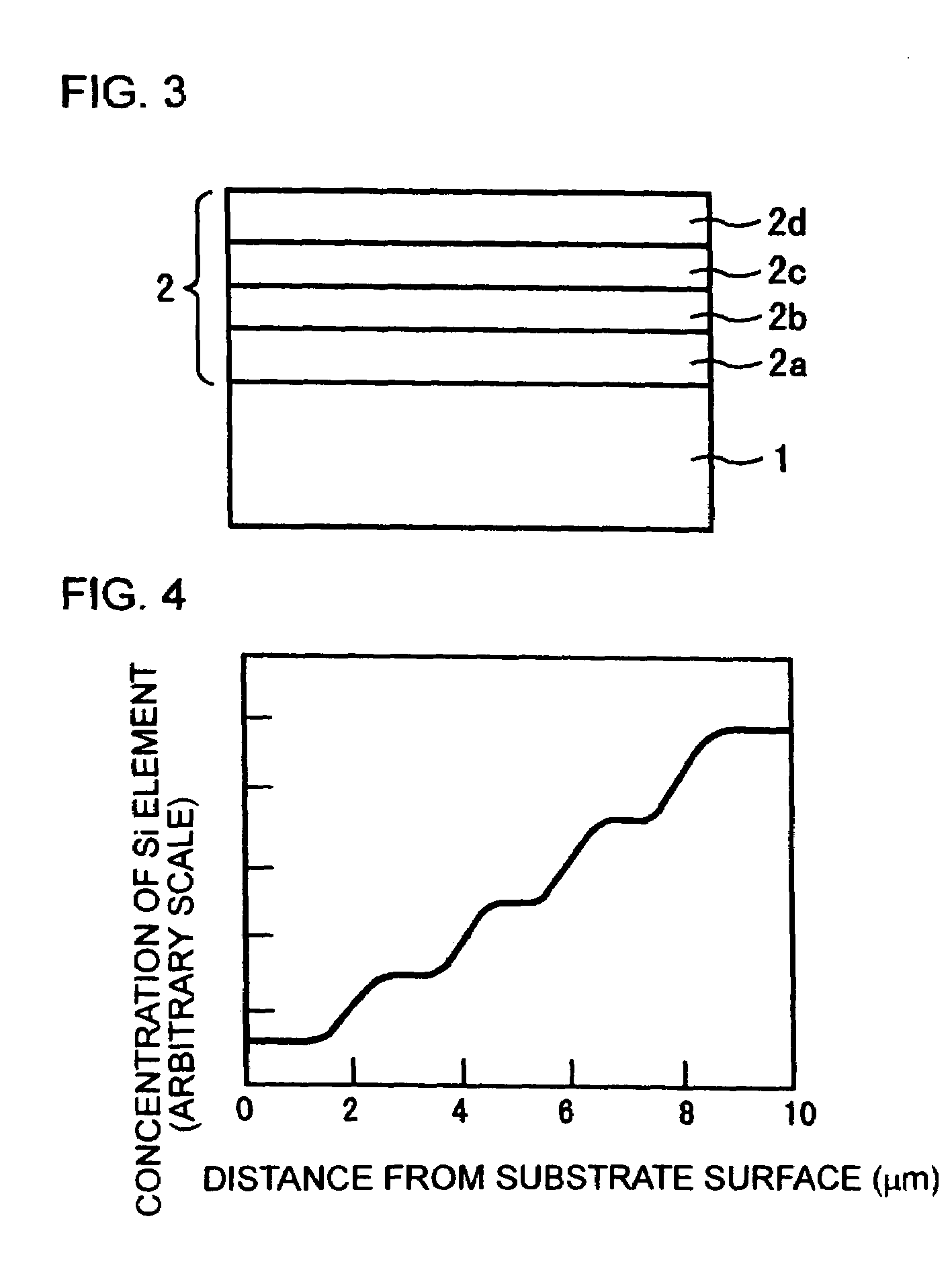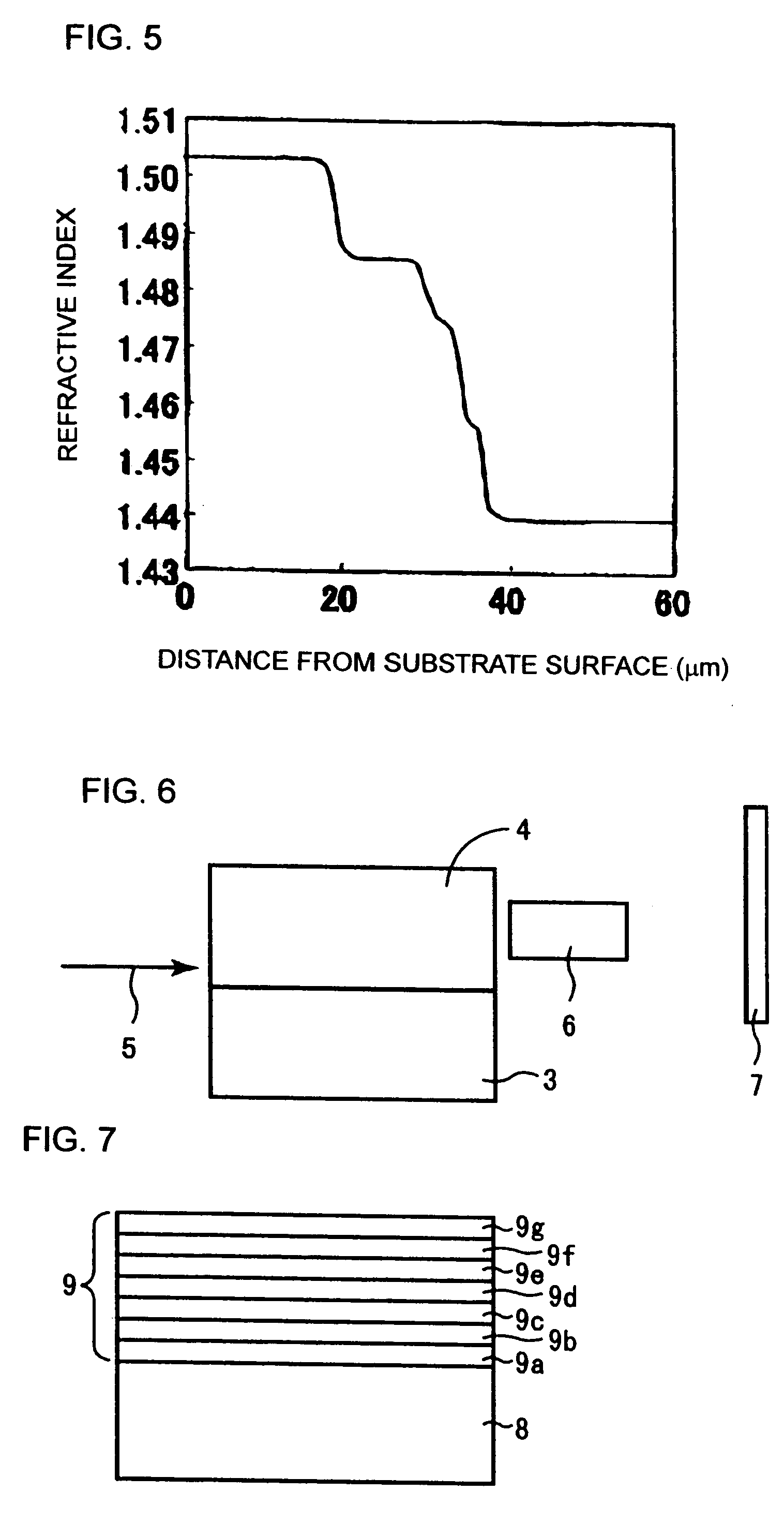Organic-inorganic composite material and laminate, optical waveguide and light transmission structure comprising the same
a composite material and organic material technology, applied in the direction of natural mineral layered products, tyre parts, water-setting substance layered products, etc., can solve the problems of inability to meet the requirements of use, so as to achieve the effect of increasing the refractive index and reducing the refractive index
- Summary
- Abstract
- Description
- Claims
- Application Information
AI Technical Summary
Benefits of technology
Problems solved by technology
Method used
Image
Examples
example 1
[0097]The coating solutions 5, 4, 3, 2 and 1 described above were applied in this order onto a quartz glass substrate, to form a laminate wherein 5 layers (films) made of the respective organic-inorganic composite materials were laminated. Each coating solution was applied by spin coating. It was predetermined for the thickness of each layer to be 2 μm after drying. The thickness of each layer was controlled by the number of revolutions of the substrate in the step of spin coating. Each coating solution was applied and then dried for 1 hour in an electric oven at about 110° C. Because 5 layers i.e. films were laminated, the test specimen was dried 5 times in total in the electric oven.
[0098]FIG. 4 is a graph showing the profile of concentration of Si element in the laminate formed in the manner described above. The concentration of Si element was measured by secondary ionization mass spectrometry (SIMS). In FIG. 4, the distance from the surface of the substrate is shown in the absci...
example 2
[0100]The coating solutions 5, 4, 3, 2 and 1 were applied in this order onto a quartz glass substrate (refractive index: 1.46) in the same manner as in Example 1, to form a laminate. In Example 2, however, the respective layers were formed so as to be 20, 10, 5, 3 and 22 μm in thickness, respectively.
[0101]FIG. 5 is a graph showing the profile, in the direction of thickness, of the refractive index of the laminate in Example 2.
[0102]As shown in FIG. 5, this laminate is provided with a graded structure wherein the refractive index is gradually decreased from the substrate to the surface of the laminate.
[0103]As shown in FIG. 6, this laminate was used as a graded index-type planar optical waveguide. Referring to FIG. 6, laminate 4 is arranged on a quartz glass substrate 3. Laminate 4 is the laminate in Example 2. Laser light 5 was introduced into the end surface of a layer of low refractive index in laminate 4 near to the substrate 3. In the vicinity of the end surface of laminate 4 a...
example 3
[0107]The coating solutions 5, 4, 3, 2, 1, 2, 3, 4 and 5 were applied in this order onto a quartz glass substrate, to laminate thin films on the substrate. Each coating solution was applied and dried in the same manner as in Example 1. It was predetermined for the thickness of each layer to be 2 μm after drying. A laminate was formed by laminating 9 films in total.
[0108]FIG. 9 is a graph showing the profile of concentration of Si element in the direction of thickness in the laminate, as determined by SIMS. As shown in FIG. 9, the concentration of Si element is highest in the middle of the laminate, and the concentration of Si element is first increased and then decreased in the direction of thickness in the laminate. Accordingly, the refractive index is first decreased and then increased in the direction of thickness.
[0109]As shown in FIG. 9, those regions of about 1 μm in thickness wherein the concentration of Si element is almost constant have been formed apart by 1, 3, 5, 7, 9, 1...
PUM
| Property | Measurement | Unit |
|---|---|---|
| thickness | aaaaa | aaaaa |
| domain sizes | aaaaa | aaaaa |
| transmittance | aaaaa | aaaaa |
Abstract
Description
Claims
Application Information
 Login to View More
Login to View More - R&D
- Intellectual Property
- Life Sciences
- Materials
- Tech Scout
- Unparalleled Data Quality
- Higher Quality Content
- 60% Fewer Hallucinations
Browse by: Latest US Patents, China's latest patents, Technical Efficacy Thesaurus, Application Domain, Technology Topic, Popular Technical Reports.
© 2025 PatSnap. All rights reserved.Legal|Privacy policy|Modern Slavery Act Transparency Statement|Sitemap|About US| Contact US: help@patsnap.com



